Inverted Tinge
Published: Undergraduate Graduation Project, 2019
My Role: Developer
Responsibility: Physical prototyping
Tags: Arduino, Physical Computing & Prototyping
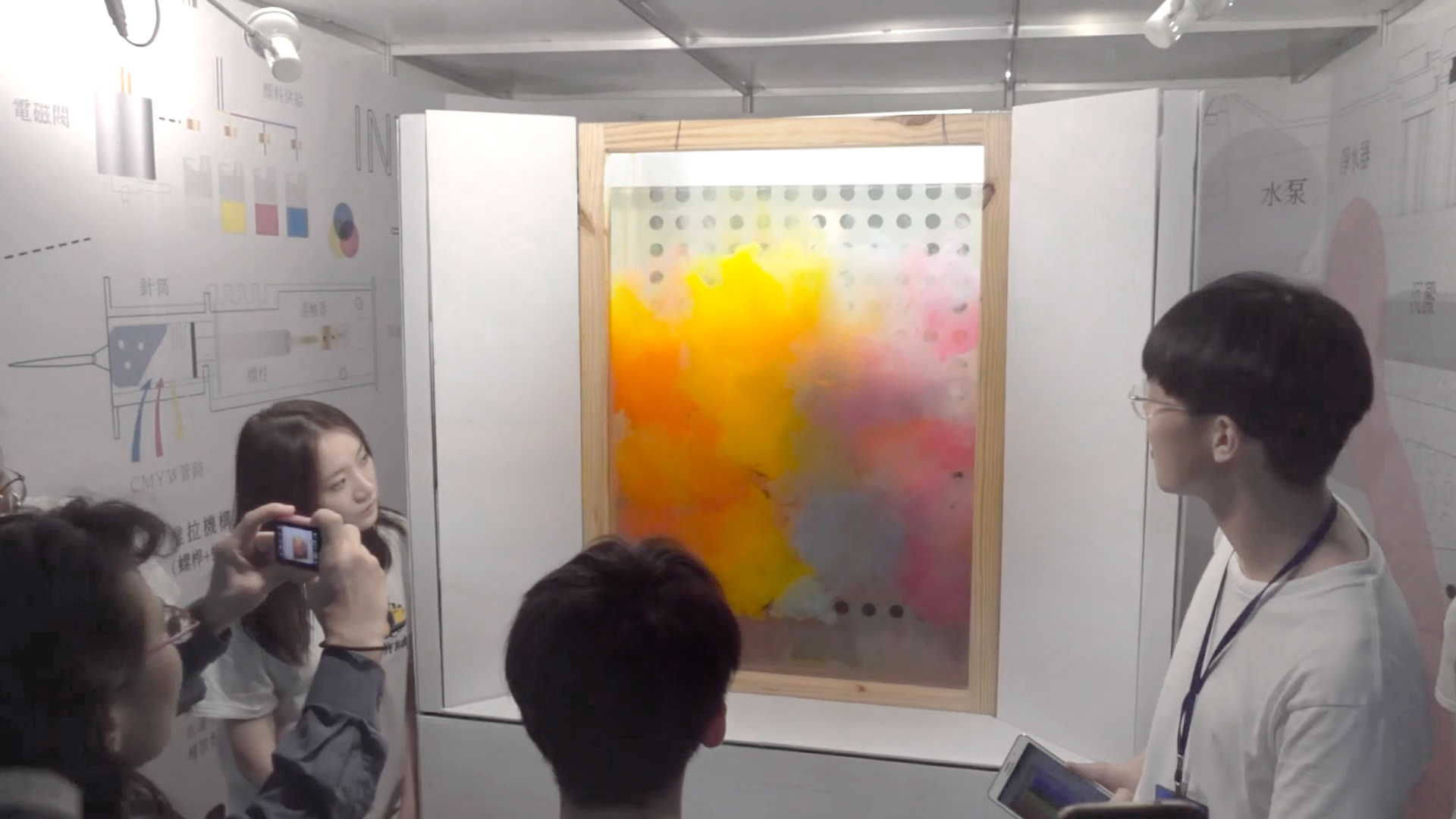
Prototypes
To test our design, we made several prototypes. Here are three of them:
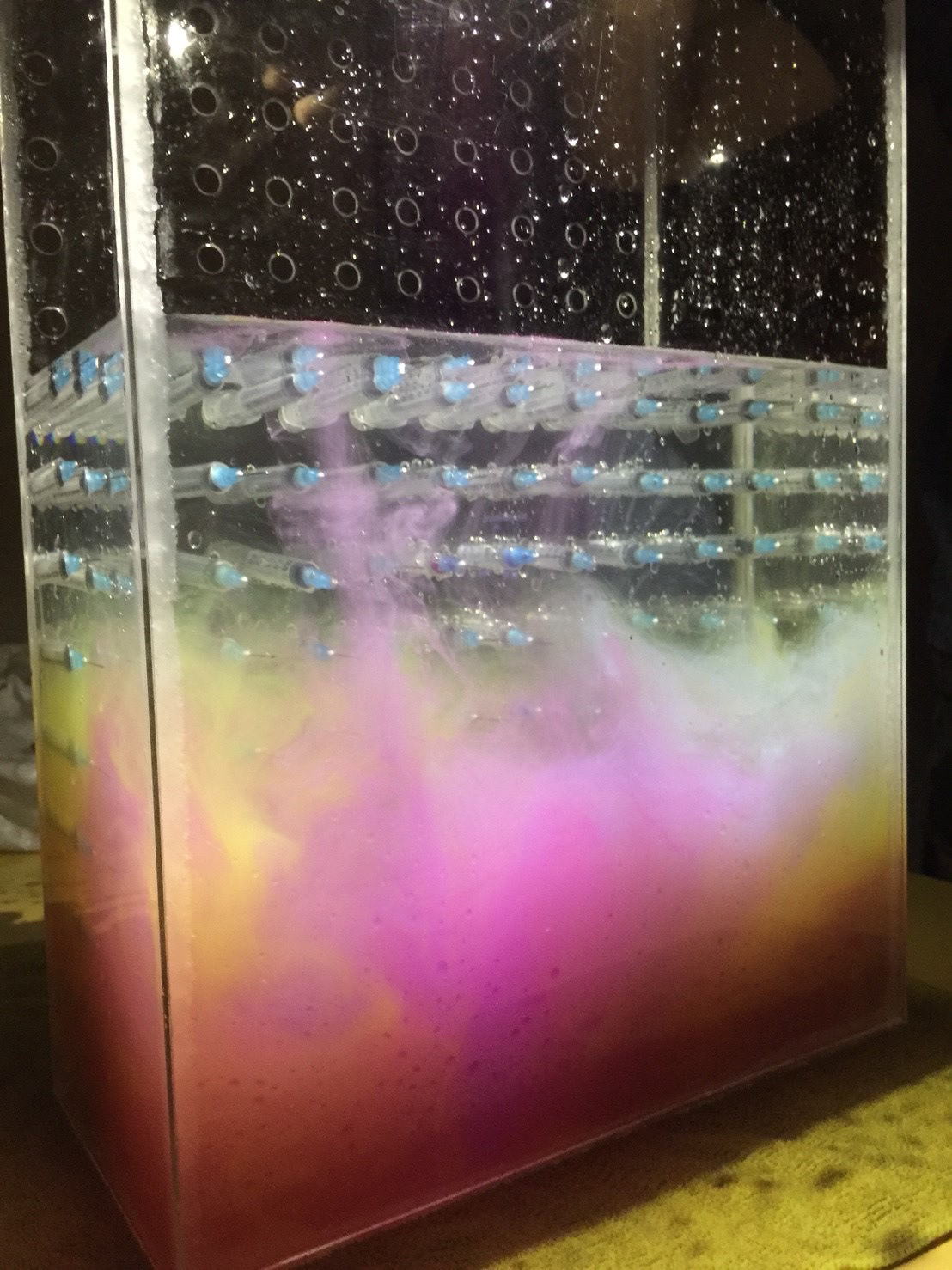 | 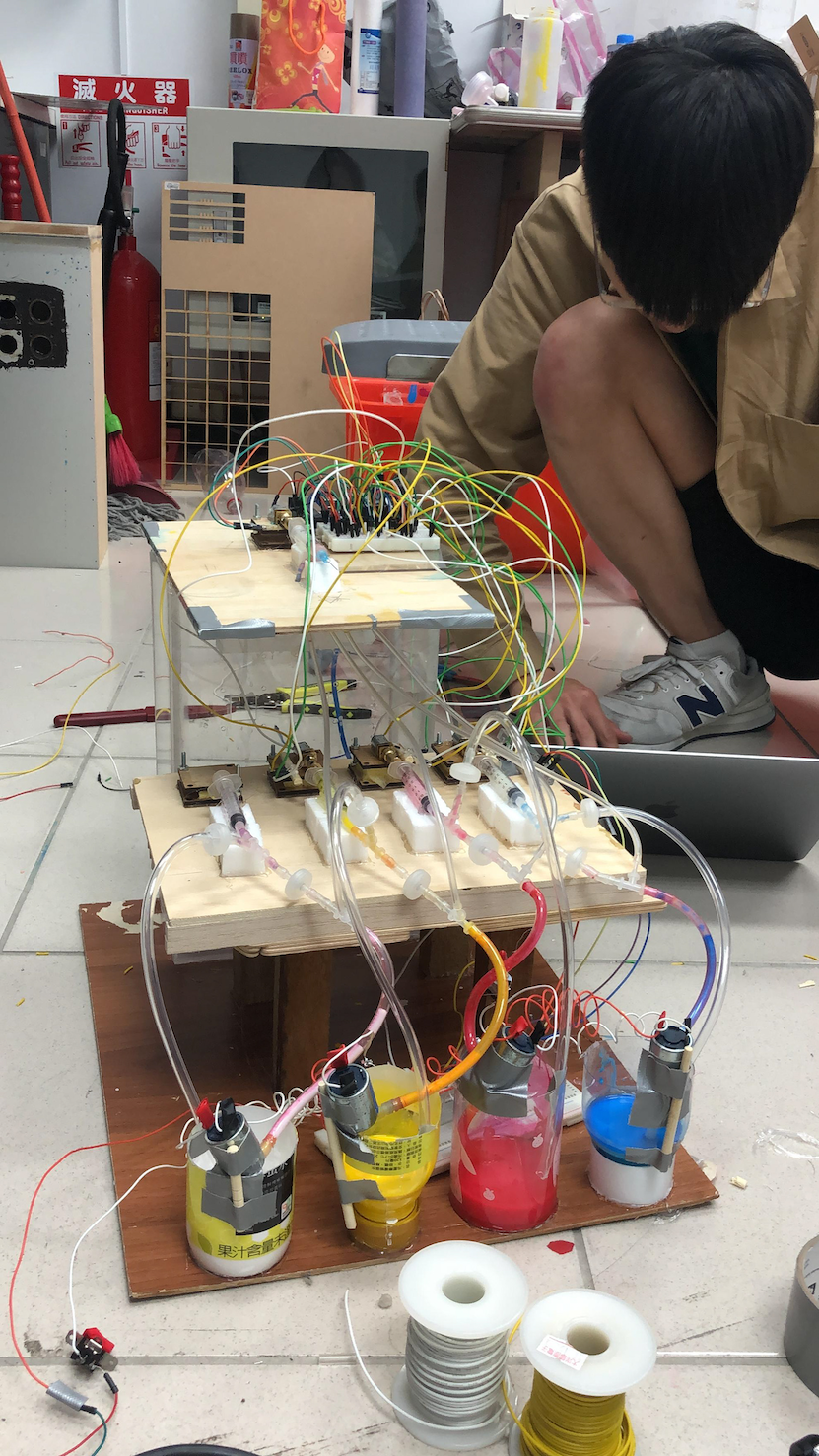 | 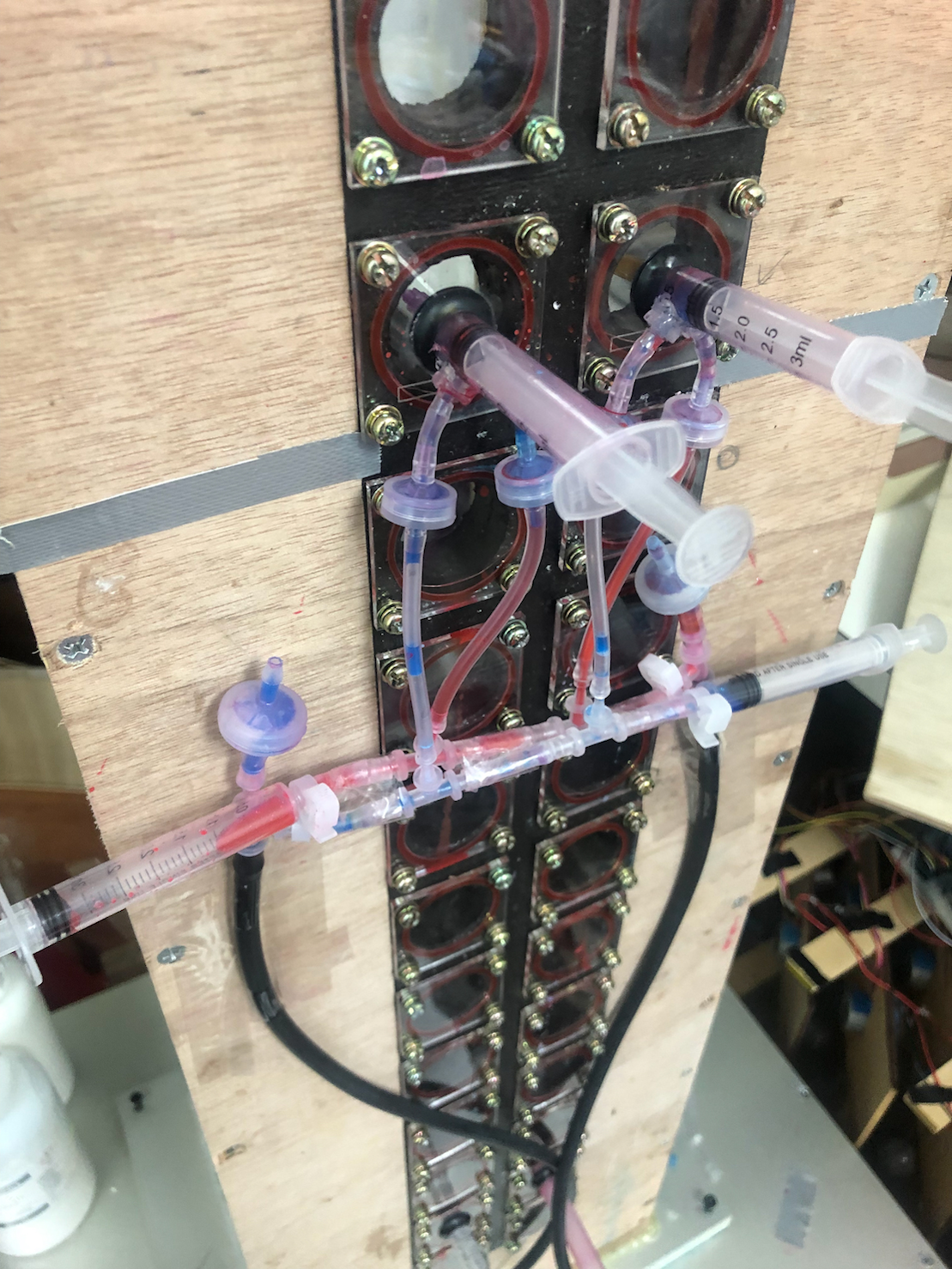 |
| 1. Throw-away version: to test out the influence of water pressure and also the effect of the injection. | 2. Incremental version: to test the Pigment supply system and also the colour mixing algorithm. | 3. Evolutionary version: a tall one to test the influence of water pressure to the colour supply system and the waterproof system. |
Colour Mixing Module Design
To facilitate the production speed and also facilitate future maintenance, we designed each unit as a detachable module.
Pigment extraction and release: The linkage system push and pull the piston moving forward to suck CMYK( cyan, magenta, yellow and white) pigments into the syringe; or backwards to inject the mixed pigments through the syringe needle into the water.
The linkage system: the linkage system included the stud, coupling, hall effect sensor and motor. A screw and stud were used to make up of linkage to move the piston.
Shock absorber: to avoid the damages caused by motor vibration, a panel is fixed by springs to act like a shock absorber.
 | 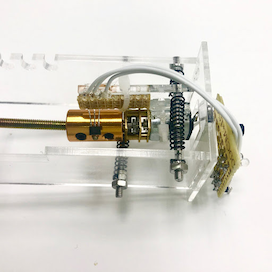 | 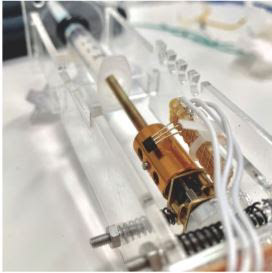 |
Colour Supply System
Plastic T-connectors in different sizes, as well as Y-connectors, were used in the colour supply system to connect the colour mixing modules into a colour supply net through pipelines.
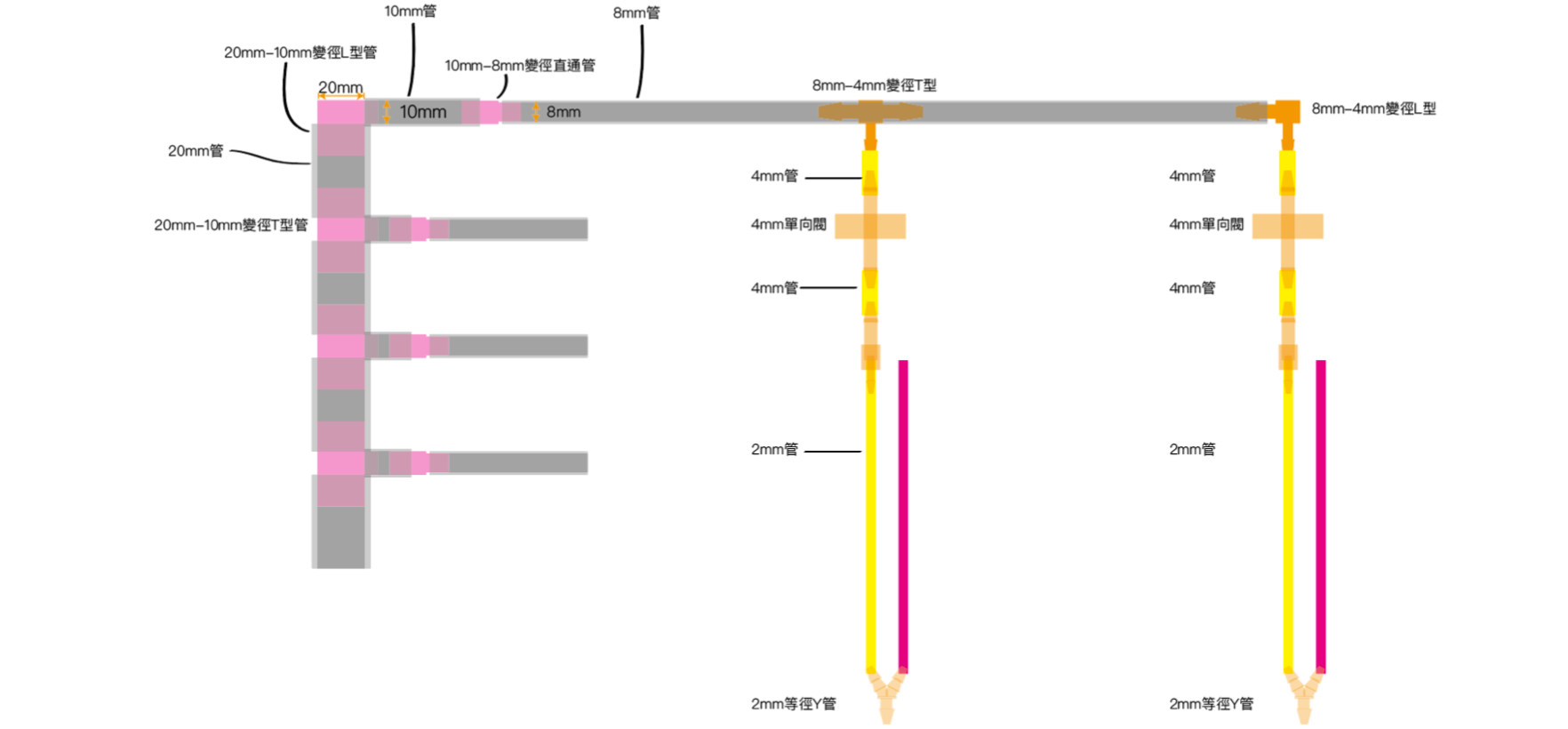
Colour Mixing Algorithm
There are mainly two problems needed to be solved in this section:
How to convert the computer display color space (RGB) to a colour space that can be generated by pigments that can be seen on the market.
How to mix normal pigments with unknown densities to generate a colour that we want.
RGB to CMYW Algorithm
Due to the budget limitation, we do not use K, since, theoretically, CMY can be mixed to generate K. In the mean time, W can not be generated by mixing CMY, so I need to convert RGB to CMYW.
C’, M’, Y’=1-R, 1-G, 1-B
K=min(C’, M’, Y’)
W=min(R, G, B)
C, M, Y=C’+K, M’+K, Y’+K
Color Correction
Because the density of each pigment is different, so based on the algorithm above is not enough to mix a standard colour. To solve this problem, I first mixed the pigments(CMY) manually to black and applied the algorithm with the proportion of each pigment.
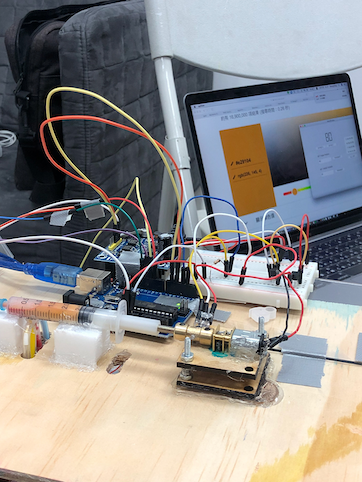 | 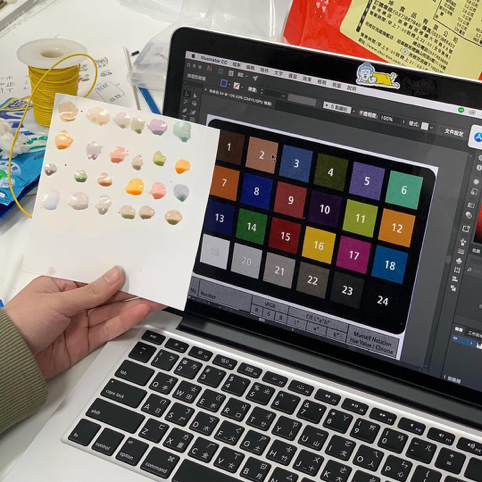 |
Wire Module Design
Based on the experience of making “Whale Fall”, I noticed that we need to finish the wires more properly, otherwise it would be a disaster. Therefore, I designed the detachable wire module. It has three advantages:
- Accelerate production speed, which was the most important for us at that time.
- Facilitate future maintenance, which was confirmed in the final exhibition later.
- More robust and stable when the device is going to display in different places.
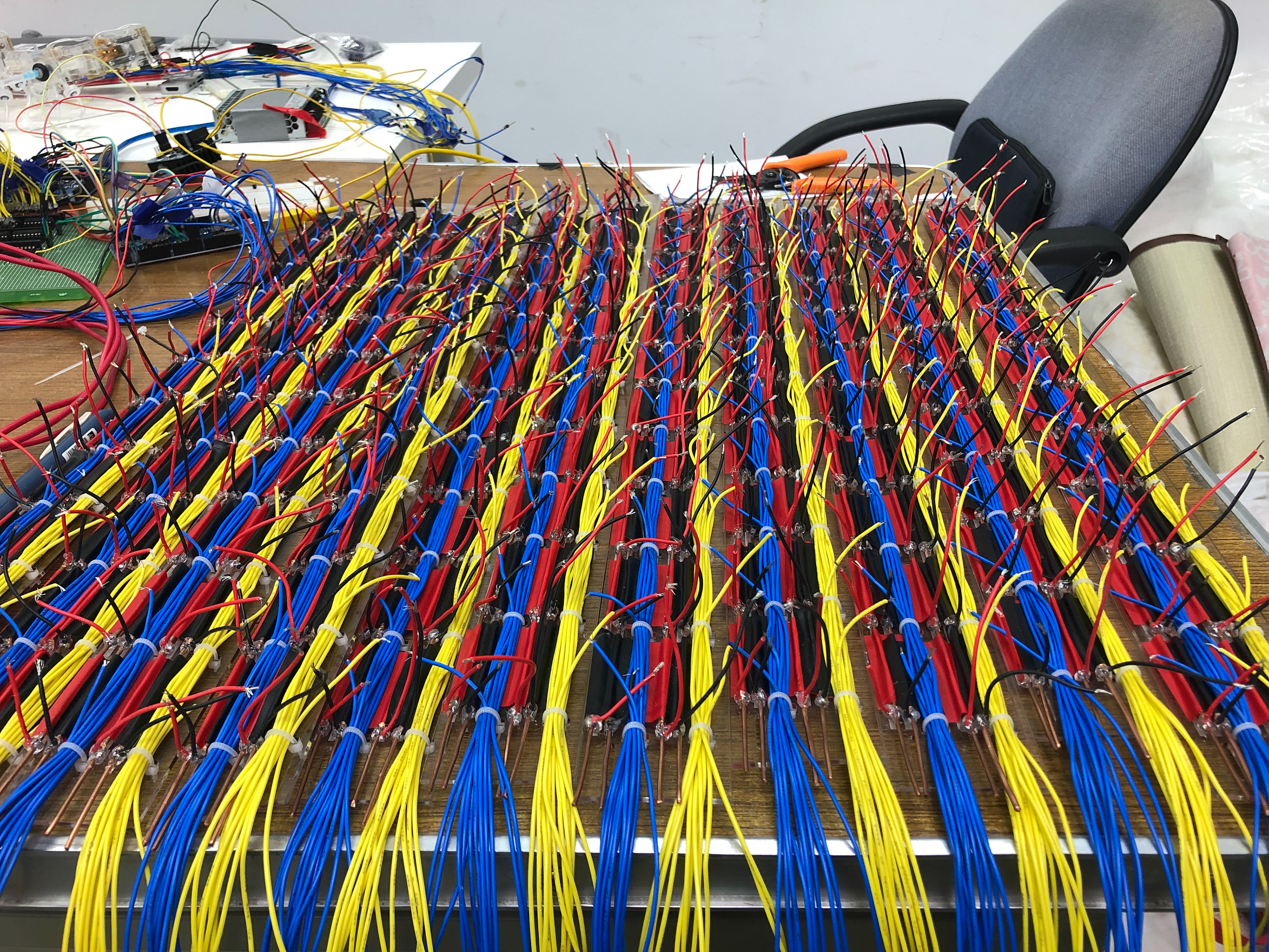 | 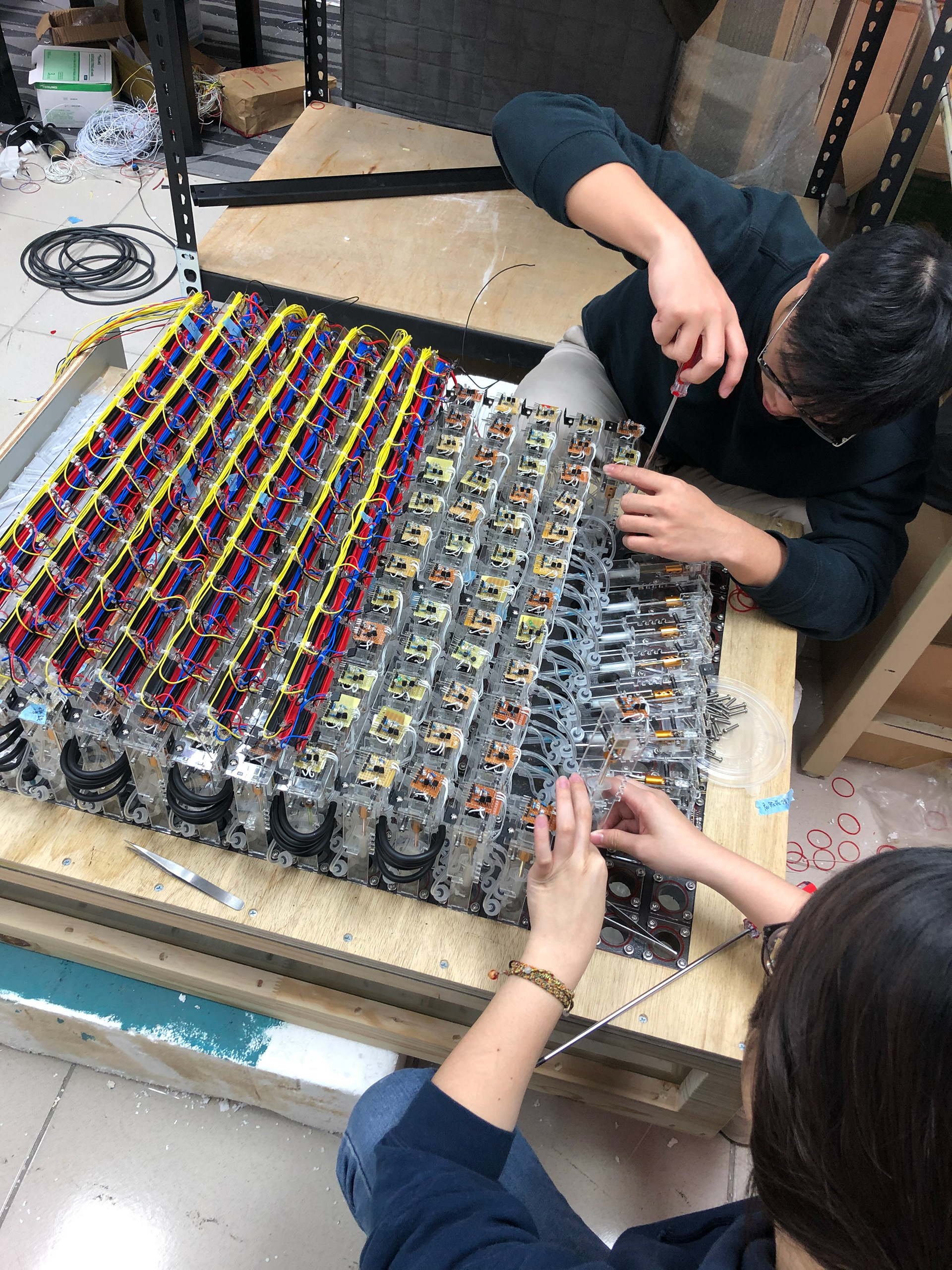 |
